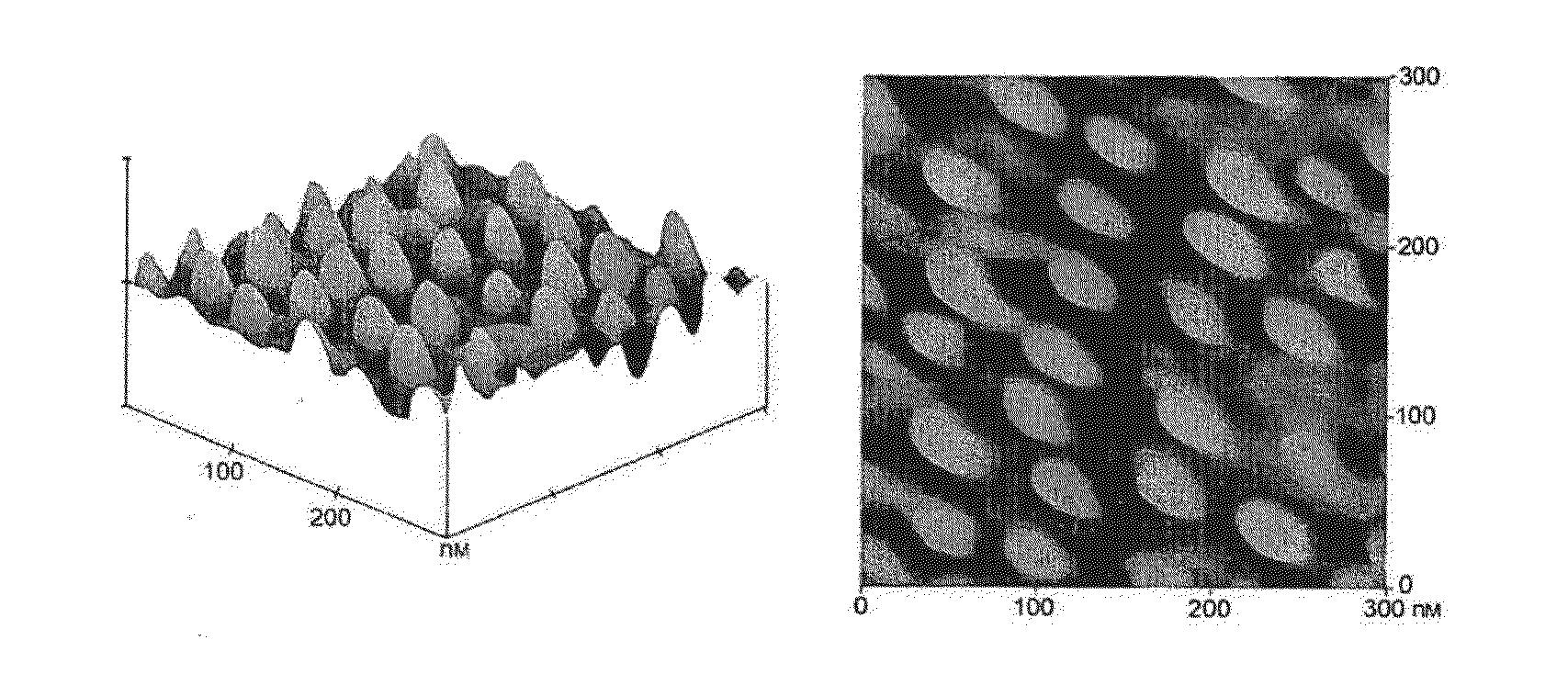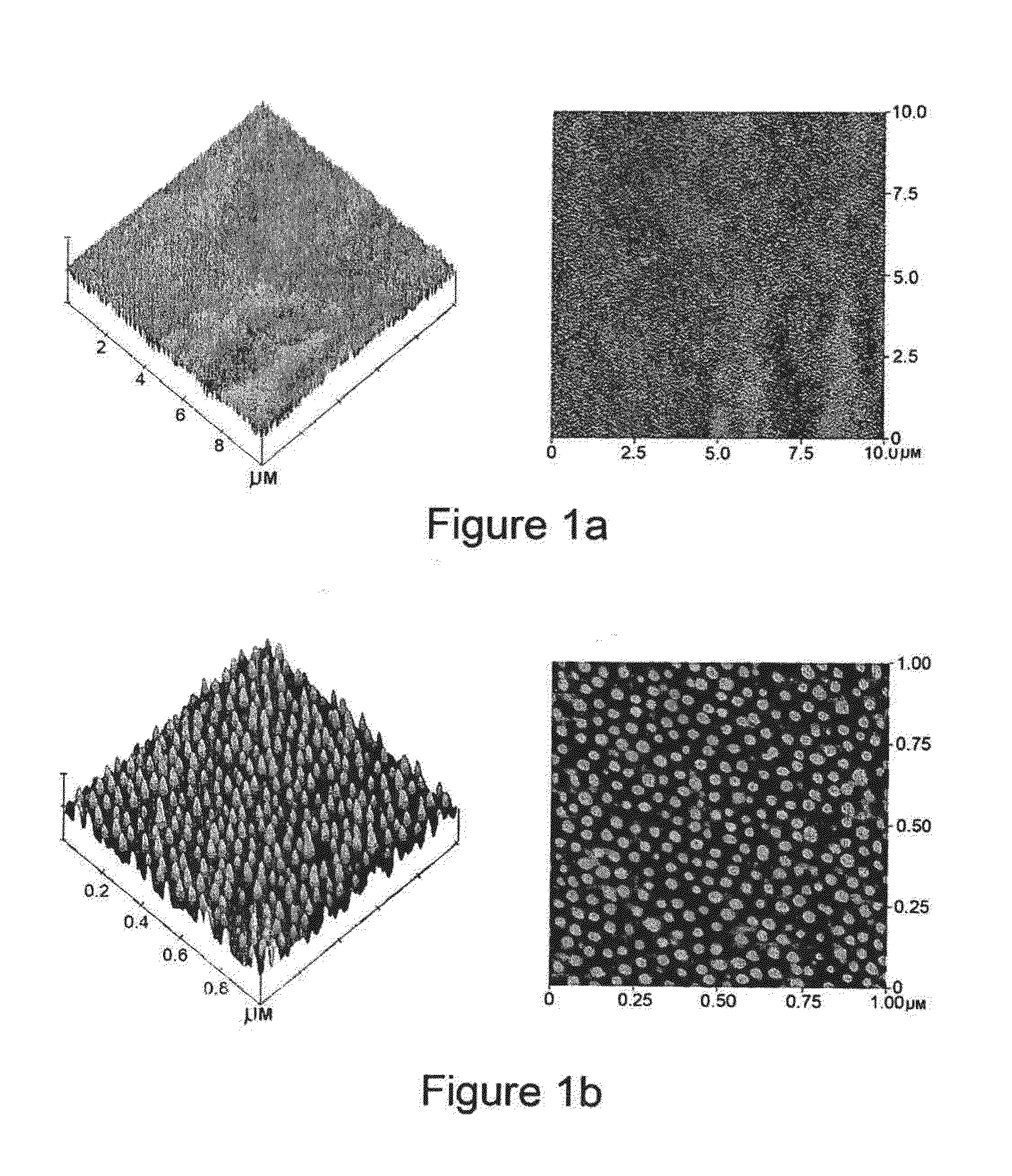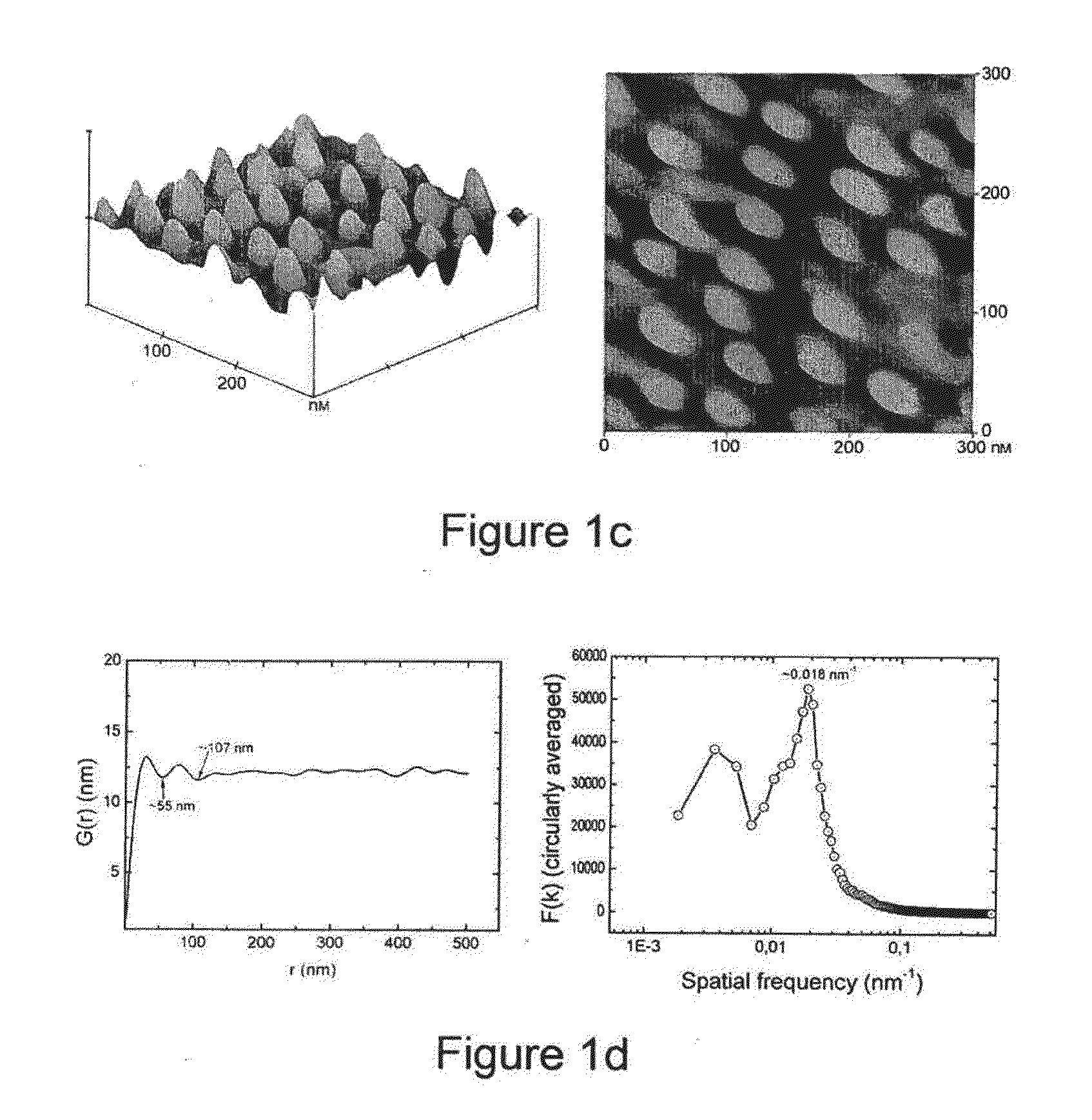Method for the fabrication of periodic structures on polymers using plasma processes
a technology of periodic structure and plasma process, which is applied in the field of plasma-directed method of self-assembly of polymer, can solve the problems of affecting the optical properties, affecting the surface, and exhibiting a peaked fft, etc., and achieves enhanced anti-reflective performance, affecting optical properties, and enhancing anti-reflective performance.
- Summary
- Abstract
- Description
- Claims
- Application Information
AI Technical Summary
Benefits of technology
Problems solved by technology
Method used
Image
Examples
example 1
Highly Periodic Pattern Formation on PMMA Plates by Oxygen Plasma Treatment at 0 V Bias
[0058]PMMA in a 2 mm thick sheet-form (purchased from IRPEN, Spain) is used as delivered (with only a few seconds cleaning with isopropanol) with no other special pre-treatment. A plasma reactor (MET-Alcatel), equipped with a helicon source (at 13.56 MHz), providing RF top-power 2000 W is used, to provide high neutral and ion flux. The electrode is not externally biased, and is set at 50° C. The chamber is fed with 100 sccm O2 and set at 0.75 Pa. The chamber walls are made of Anodized Al, and the plasma source wall from Al2O3. It is clarified that this particular reactor does not have an electrostatic shield for the RF fields of the helicon source antenna, and as a result source wall material is sputtered due to high capacitive voltages developing in the source.
[0059]FIG. 1 demonstrates three different magnification Atomic Force Microscopy (AFM) images of the same PMMA sheet surface after 5 min Ox...
example 2
Effect of Processing Time on Geometrical Characteristics of Highly-Periodic Patterns
[0060]PMMA plates were treated as described in example 1 for 3 and 5 min. Scaling analysis showed the following results:
RMSAverage widthAverage spacingConditionsin nm(2 ·ξ) in nmin nm, wavelength 3 min, 50° C.4.91627.5 5 min, 50° C.8.6285515 min, 50° C.25
[0061]As time proceeds the periodic mounds grow higher, wider, and with a larger spacing. The periodicity persists for several minutes of processing, but is lost at long processing times (15 min in this example).
example 3
Effect of Sample Temperature on Geometrical Characteristics of Highly-Periodic Patterns
[0062]PMMA samples were treated as described in example 1, but the temperature was kept higher 75° C. Scaling analysis results are shown below and compared with example 1.
RMSAverage widthAverage spacingConditionsin nm(2 ·ξ) in nmin nm, wavelength3 min, 50° C.4.91627.55 min, 75° C.10.2362116
[0063]As can be seen, increasing the temperature the height, width, and spacing between nanostructures are increased.
PUM
| Property | Measurement | Unit |
|---|---|---|
| Temperature | aaaaa | aaaaa |
| Temperature | aaaaa | aaaaa |
| Temperature | aaaaa | aaaaa |
Abstract
Description
Claims
Application Information
 Login to View More
Login to View More - R&D
- Intellectual Property
- Life Sciences
- Materials
- Tech Scout
- Unparalleled Data Quality
- Higher Quality Content
- 60% Fewer Hallucinations
Browse by: Latest US Patents, China's latest patents, Technical Efficacy Thesaurus, Application Domain, Technology Topic, Popular Technical Reports.
© 2025 PatSnap. All rights reserved.Legal|Privacy policy|Modern Slavery Act Transparency Statement|Sitemap|About US| Contact US: help@patsnap.com



